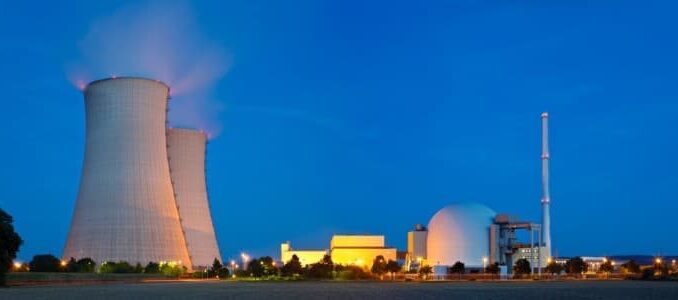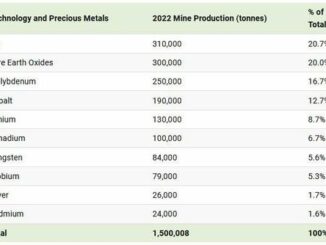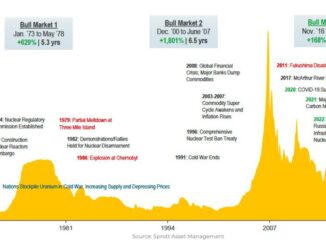
- Rising climate change awareness is leading to a renewed interest in nuclear energy, with public support in the U.S. at a decade high.
- Recent advances in small modular reactors and existing nuclear infrastructure position nuclear power as a viable, stable energy source.
- Increased demand and higher uranium prices signal the market’s bullish outlook for nuclear, with the U.S. possessing significant uranium reserves.
Nuclear is back. After decades of decline in the West’s nuclear energy industry, public and private support of nuclear energy is reversing course. As the specter of climate change grows and intensifies, increased nuclear power production has emerged as a promising pathway to solving the world’s energy trilemma: an energy supply that is secure, affordable, and sustainable.
While nuclear has received a lot of bad press in the past thanks to high profile nuclear disasters like Fukushima, Chernobyl, and Three Mile Island, its numerous benefits have been receiving more and more attention in recent years. In fact, public support for nuclear energy in the United States is at a 10-year high according to a Gallup poll released earlier this year.
Nuclear advocates argue that nuclear energy has a number of unique benefits that we can no longer afford to overlook in the context of climate change. It is a completely carbon-free form of energy production, and – crucially – it’s a baseload power source. This means that, unlike solar and wind energy, its production isn’t variable, waxing and waning according to weather patterns and the Earth’s rotation. While wind and solar have some significant advantages over nuclear (no toxic waste, for one thing), their scalability is currently limited by their variability and the relatively undeveloped long-term energy storage sector.
Nuclear is also a proven technology with plenty of existing infrastructure. While the United States fleet of nuclear power plants is aging after decades of disinterest and neglect, it’s still formidable – nuclear power still provides nearly 20% of the nation’s energy. And while the nuclear sector had stalled out in the West over the last few decades, nuclear plant technology has marched forward, solving some of the major challenges toward re-embracing nuclear as a central power source. While traditional nuclear reactors are extremely costly to build, recent breakthroughs in small modular reactors – which can be mass produced in a dedicated facility and assembled onsite – are already changing this.
The changing tides for nuclear energy can be quantified through market patterns for the uranium that fuels the reactors. Yellowcake uranium prices have skyrocketed, reaching their highest level in over a decade, going by more than 10% month-over-month. “Uranium demand has been lifted by governments from Washington to Seoul and Paris seeking energy independence by extending the lifetime of the existing fleet of nuclear reactors as they contemplate building new plants after gas prices skyrocketed due to Russia’s full-scale invasion of Ukraine,” the Financial Times reported last month.
“You have a focus on energy security colliding with a focus on clean energy,” Grant Isaac, chief financial officer at Cameco, the world’s second-largest uranium producer, told the Financial Times. “The days of buying $40 uranium are over — and probably also for $50 or $60. We’re going to need new supplies,” he added. Uranium mining has seriously dipped since the Fukushima nuclear disaster in 2011, when demand plummeted. This is also a factor in pushing up prices, and a major incentive for new mining ventures looking to get in on the current demand surge. While uranium prices still haven’t rebounded to pre-Fukushima levels, they’re well on their way, and some speculators think that they could skyrocket to around $200 per pound by just 2025.
The United States is well positioned to build up a robust domestic uranium production sector. A 2019 Annual Report from the United States’ Uranium Committee of the Energy Minerals Division assessed that the U.S. has more than enough uranium to fuel hundreds of years of nuclear power generation, even if nuclear power was being relied on as a much more significant source of energy in the national energy mix than it is now.



